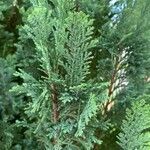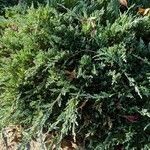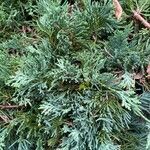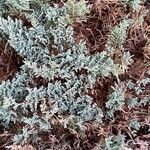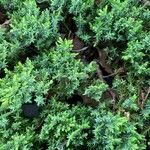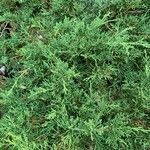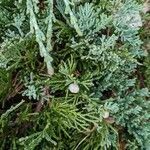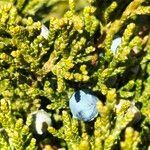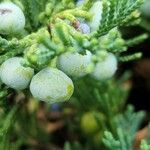Branches closely prostrate, often much elongate, with numerous erect branches 1–3 dm; lvs mostly scale-like and appressed, varying from ovate and 1–2 mm to oblong and to 4 mm; cones on short, recurved peduncles, blue, 5–8 mm thick; seeds mostly 3–5, not pitted. Rocky or sandy places; nearly transcontinental in Can., from Nf., Lab., and Que. to Yukon and n. B.C. and disjunct in Alas., more scattered s. to Me. (esp. along the coast), N.H., N.Y., Mich. (notably along the shores of the Great Lakes), Wis., Minn., and Wyo. Hybridizes with J. virginiana.
A low lying shrub. The shoots are long and trailing. The leaves are like scales. They are opposite each other and each pair is at right angles to the next. They are triangle shaped and overlap. They are 1-2 mm long. The pollen cone is brown. It is 2 mm long. The fruit are oval and 6 mm long. There are 1-4 seeds.
